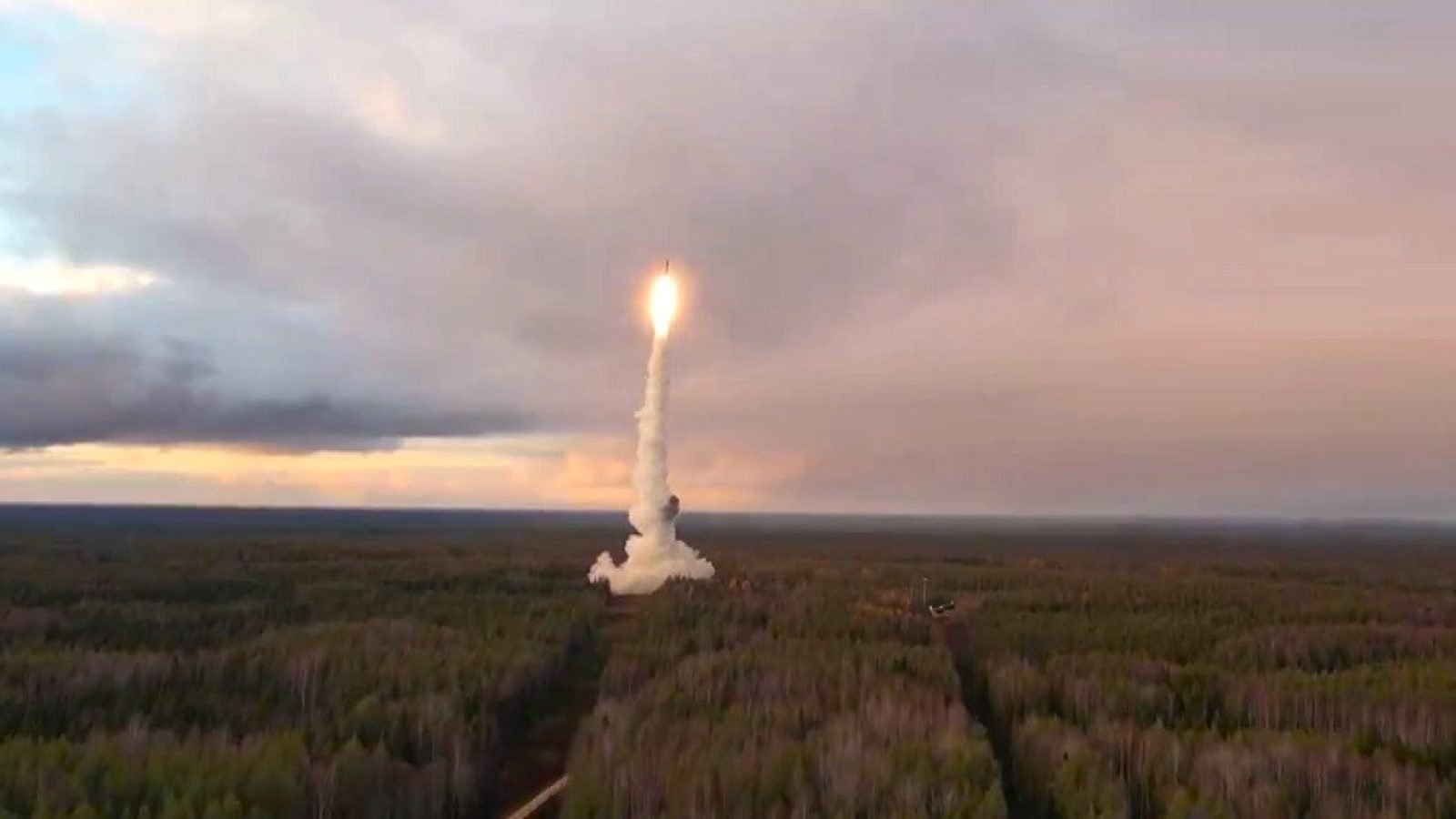In moves more in line with Cold War days than recent decades, Russia has conducted large-scale tests of it’s ability to respond to a nuclear strike on it’s soil today. Launching an array of long-range missiles, Russia’s exercise is aimed at testing its strategic forces, according to a statement by Vladimir Putin during today’s test exercises.
The event included land, sea, and air-based missiles, and included ICBM’s capable of reaching the United States.
Russia’s military test-fired ballistic missiles across the country Tuesday to simulate a “massive” nuclear response to an attack on the country.
Read more: https://t.co/qwLmboWTXN pic.twitter.com/oKEI54uP97
— The Moscow Times (@MoscowTimes) October 29, 2024
According to report by Reuters, the test simulated a “massive” response to an enemy first strike amid growing geopolitical tensions. This also comes on the heels of revelations that North Korean troops have been moved to Russian soil for training and possible soon deployment to the front in Ukraine.
Russia test-fired missiles over distances of thousands of miles on Tuesday to simulate a “massive” nuclear response to an enemy first strike.
“Given the growing geopolitical tensions and the emergence of new external threats and risks, it is important to have modern and constantly ready-to-use strategic forces,” President Vladimir Putin said as he announced the exercise.
It took place at a critical moment in the Russia-Ukraine war, after weeks of Russian signals to the West that Moscow will respond if the United States and its allies allow Kyiv to fire longer-range missiles deep into Russia.
On Monday NATO said that North Korea has sent troops to western Russia, something Moscow has not denied.
ADVERTISEMENTIn televised comments, Defence Minister Andrei Belousov told Putin that the purpose of the drill was to practise delivering “a massive nuclear strike by strategic offensive forces in response to a nuclear strike by the enemy”.
The exercise involved Russia’s full nuclear “triad” of ground-, sea- and air-launched missiles.
Todays’ nuclear force training by Russia comes months after Russia announced a new type of nuclear-capable ICBM during a launch that took place earlier this year in Russia’s Kapustin Yar test site.
⚡️🇷🇺 The Russian Ministry of Defense announced the testing of a new intercontinental nuclear missile at the Kapustin Yar test site (near Volgograd) pic.twitter.com/13kXVexDof
— MenchOsint (@MenchOsint) April 12, 2024
Russia successfully test-fired the Sineva intercontinental ballistic missile from the Barents Sea using the Tula nuclear-powered submarine, as confirmed by the Russian Defense Ministry.#Russian #Russia #nuclear #Iran #Lebanon pic.twitter.com/85mwvrHdzv
— Geo Lens (@Geolens1) October 29, 2024
Putin just recently approved changes to Russia’s nuclear doctrine, expanding the scenarios under which a nuclear response would be considered appropriate under Russian law. According to the Reuters story cited above, one scenario included in the list would be any attack by a nation supported by a nuclear power.
Since the start of the war, Putin has sent a series of pointed signals to the West, including by changing Russia’s position on major nuclear treaties and announcing the deployment of tactical nuclear missiles to neighbouring Belarus.
Ukraine has accused him of nuclear blackmail. NATO says it will not be intimidated by Russian threats.
Last month the Kremlin leader approved changes to the official nuclear doctrine, extending the list of scenarios under which Moscow would consider using such weapons.
Under the changes, Russia would consider any assault on it supported by a nuclear power to be a joint attack – a warning to the United States not to help Ukraine strike deep into Russia with conventional weapons.
ADVERTISEMENTPutin has said that Russia does not need to resort to the use of nuclear weapons in order to achieve victory in Ukraine.
Russia is the world’s largest nuclear power. Together, Russia and the U.S. control 88% of the world’s nuclear warheads.
Only a month ago, Putin announced that Russia would conducted the first nuclear controlled detonation test in 35 years. That test is yet to happen.

The Russian military has been experimenting with nuclear exercises, and is now launching intercontinental ballistic missiles from the Tula nuclear submarine and the Yars nuclear submarine. pic.twitter.com/T8PA2Ks00r
— S p r i n t e r (@SprinterFamily) October 25, 2023
The nuclear training shown in the video above was carried out a year ago, with Russia having amped up it’s frequency and size of nuclear test exercises since then. While the Biden-Harris administration has repeatedly stated there has been no indication of a change in Russia’s nuclear posture, these tests and Putin’s own announcement of a switch to more mobile-based missile systems seems to indicate that once again, the Biden-Harris administration would rather ignore the problem than confront it head on.



Join the conversation!
Please share your thoughts about this article below. We value your opinions, and would love to see you add to the discussion!